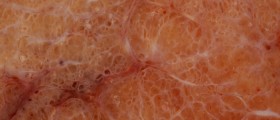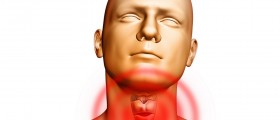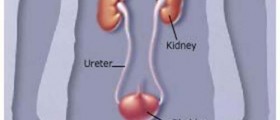
Graves’ disease is an autoimmunedisease that manifests in the form of a metabolic imbalance those results inthe overproduction of thyroid hormones. When someone has the disease, thethyroid gland in their necks is enlarged and hyperactive, producing way morethyroid hormones than are necessary for the body.
Graves’ disease can affect manyparts of the body, including the nervous system, digestive system, reproductivesystem, eyes, skin, hair, nails, muscles and bones.
Graves’ is a lot more common inwomen than men, eight times in fact. It occurs most commonly between the agesof 20 and 40 and is often caused by an infection or physical and emotionalstress.
When the disease enters the body,it forms auto antibodies that will bind to receptors in the thyroid cellmembranes and stimulate the gland, causing it to overproduce hormones.
The symptoms of Graves’ are verysimilar, even identical, to those of hyperthyroidism. Classic symptoms includethe presence of a goiter (an enlarged thyroid gland), nervousness, weight loss,heat intolerance, sweating, tremors, diarrhea, palpitations and a swelling ofthe tissues behind the eyeballs, which causes the eyes to protrude and stickout.
Also, shortness of breath,weakness, fatigue, and double vision are some other symptoms commonlyassociation with Graves’.
When diagnosing for Graves’, adoctor will first look for a goiter, which is usually very obvious, since thethyroid gland is so large that it looks like a large lump or ball in the neckarea. A rapid pulse and tremor could also be evidence of Graves’. Blood testsfor accessing thyroid function will also be performed.
Tests will also be done todetermine if the thyroid land is overactive.
The treatments for Graves’disease depend on the age and over condition of the patient, as well as thesize of the goiter.
There are three current methodsof treatment. One is taking drugs that stop the production of thyroid hormonesor provide relief for the symptoms. The other is the use of radioactive iodineto destroy part of the thyroid gland and reduce hormone production in that way.The third way is to surgically remove a part of the thyroid gland.
In the drug therapy, the doctorwill prescribe either methimazole or propylthiouracil pills to stop theproduction of thyroid hormones. Some side effects of the medication could bedrowsiness and minor lethargy, while in some cases, though very rare, a blooddisease called agranulocytosis could be caused.













-And-Children-16-Warning-Signs-And-Symptoms_f_280x120.jpg)



Your thoughts on this
Loading...